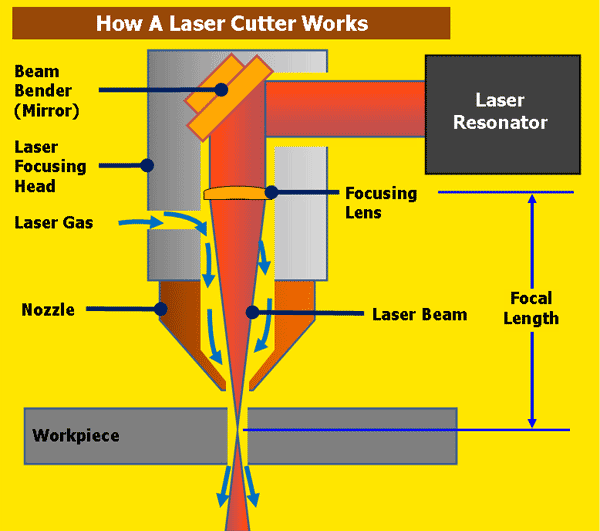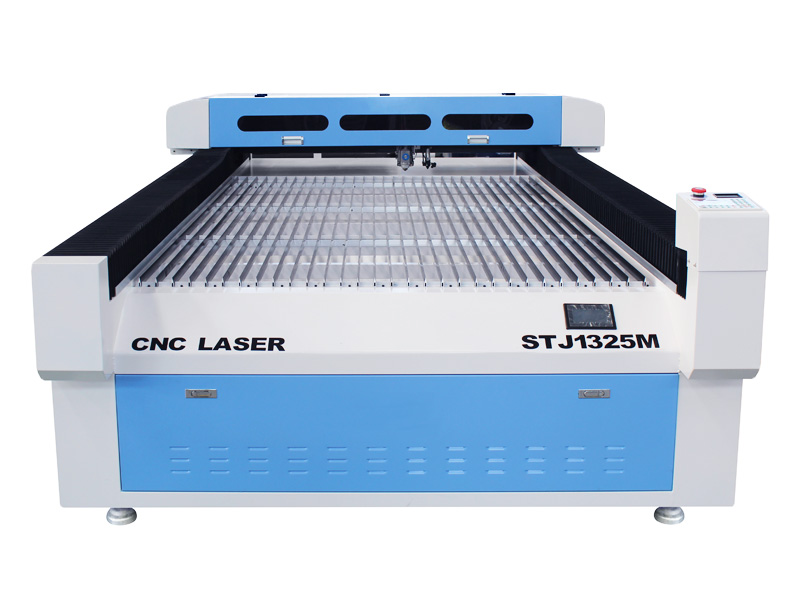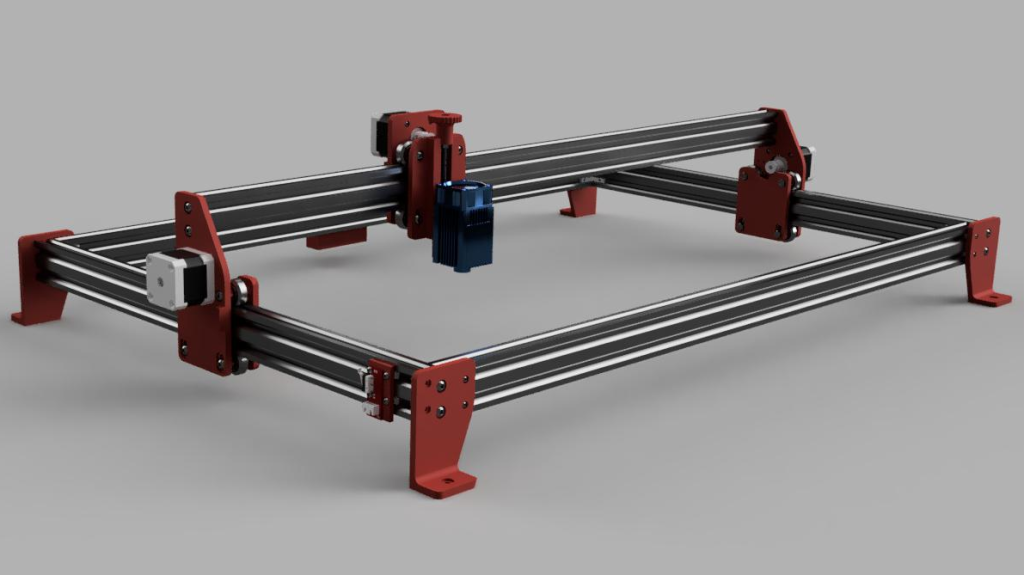Table of Contents
- Frequently Asked Questions
- What materials can I cut with a 3.5w laser on my CNC router?
- Do I need any special software to control the laser on my CNC router?
- How do I align the laser on my CNC router?
- How can I ensure the safety of myself and others when using a laser on my CNC router?
- What are some common issues that can arise when using a laser on a CNC router?
If you’re a CNC router enthusiast, you know that adding a laser to your setup can open up a world of possibilities for your projects. But where do you start? In this guide, we’ll show you step-by-step how to install a 3.5w laser onto your CNC router, so you can start creating intricate designs and engravings in no time.
Whether you’re a hobbyist or a professional, this guide is designed to help you navigate the process of adding a laser to your CNC router. We’ll cover everything from selecting the right laser for your needs to mounting and calibrating it, so you can get the most out of your machine. So let’s dive in and get started on this exciting new project!
How to Install a 3.5W Laser on My CNC Router?
If you want to install a 3.5W laser on your CNC router, follow these simple steps:
- First, you need to purchase a 3.5W laser module that is compatible with your CNC router.
- Next, mount the laser module onto your CNC router using the provided brackets.
- Connect the laser module to your CNC router’s power supply and control board.
- Install the necessary software and drivers for the laser module.
- Finally, test the laser module to ensure it is working properly.
With these steps, you can easily install a 3.5W laser on your CNC router and start creating laser-cut projects.
H2: How to Install a 3.5W Laser on My CNC Router?
If you are looking to add more functionality to your CNC router, adding a laser can be a game-changer. With a 3.5W laser, you can easily cut and engrave a variety of materials, including wood, plastic, and even some metals. In this article, we will guide you through the process of installing a 3.5W laser on your CNC router.
H3: Step 1 – Choose the Right Laser
Before you start the installation process, you need to make sure you have the right laser for your CNC router. The 3.5W laser is a popular choice, but make sure to check the compatibility with your machine. You should also consider the wavelength and focal length of the laser, as well as the size of the beam diameter.
Once you have chosen the right laser, make sure to read the manufacturer’s instructions carefully. This will give you a better idea of what to expect during the installation process.
H3: Step 2 – Prepare Your CNC Router
Before you start the installation process, you need to prepare your CNC router. This includes making sure it is clean and free of any debris. You should also make sure the machine is turned off and unplugged.
Next, you need to attach the laser mount to your CNC router. This will typically involve using screws to secure the mount to the machine. Make sure to follow the manufacturer’s instructions carefully and double-check that the mount is securely attached.
H3: Step 3 – Install the Laser
With the laser mount in place, you can now install the laser itself. This will typically involve attaching the laser to the mount using screws or other fasteners. Make sure to follow the manufacturer’s instructions carefully and take your time to ensure everything is properly aligned.
Once the laser is installed, you may need to adjust the focus. This can usually be done by turning a knob or using a wrench to adjust the position of the laser module.
H3: Step 4 – Connect the Laser to Your CNC Router
With the laser installed and properly focused, you can now connect it to your CNC router. This will typically involve connecting wires from the laser to the router’s control board. Make sure to follow the manufacturer’s instructions carefully and double-check all the connections before turning on the power.
H3: Step 5 – Test the Laser
Before you start using the laser to cut or engrave materials, you need to test it to make sure it is working properly. You can do this by running a test pattern or using a laser power meter to measure the output.
If you notice any issues with the laser, double-check all the connections and make sure everything is properly aligned. You may also need to adjust the focus or other settings to get the best results.
H3: Benefits of Installing a 3.5W Laser on Your CNC Router
There are many benefits to adding a 3.5W laser to your CNC router. With the ability to cut and engrave a variety of materials, you can expand the range of projects you can tackle. The laser can also produce highly detailed designs with a high degree of accuracy.
Another benefit of using a laser is that it can be faster and more efficient than traditional cutting or engraving methods. This can save you time and money in the long run, especially if you are working on larger projects.
H3: Laser vs. Traditional Cutting and Engraving Methods
When it comes to cutting and engraving, there are a variety of methods you can use. Traditional methods such as saws, routers, and hand tools can be effective, but they may not be as precise or efficient as using a laser.
Laser cutting and engraving can produce highly detailed designs with a high degree of accuracy. It can also be faster and more efficient than traditional methods, which can save you time and money in the long run.
H3: Conclusion
Installing a 3.5W laser on your CNC router can be a great way to expand your capabilities and tackle a wider range of projects. By following the steps outlined in this article and choosing the right laser for your machine, you can start cutting and engraving with precision and ease.
Make sure to read the manufacturer’s instructions carefully and take your time during the installation process. With a little patience and know-how, you can add a powerful tool to your CNC router and take your projects to the next level.
Frequently Asked Questions
Here are some common questions about how to install a 3.5w laser on a CNC router:
What materials can I cut with a 3.5w laser on my CNC router?
A 3.5w laser is capable of cutting through a variety of materials, including wood, acrylic, cardboard, and some thin metals. However, keep in mind that the laser’s cutting ability may vary depending on the thickness and hardness of the material being cut. It’s always a good idea to test the laser on a small sample piece of the material before cutting a larger project.
Additionally, it’s important to note that materials like PVC and vinyl should not be cut with a laser due to the toxic fumes they can release when heated.
Do I need any special software to control the laser on my CNC router?
Yes, you will need to use software that is compatible with your CNC router’s control system to operate the laser. Some popular options include LightBurn, LaserGRBL, and T2Laser. These programs allow you to create and import designs, adjust laser power and speed, and control the movement of the laser head.
Before purchasing any software, double-check that it is compatible with your CNC router and laser setup. Some software may require additional hardware or firmware updates to work properly.
How do I align the laser on my CNC router?
Proper alignment is critical for getting accurate cuts with your laser. To align the laser, you will need to adjust the mirrors and lens in the laser head to ensure that the beam is hitting the material at the correct angle. This can be a somewhat complex process, so it’s important to follow the manufacturer’s instructions carefully.
Some CNC routers come with built-in laser alignment tools to help simplify this process. If you’re unsure about how to align your laser, consider seeking assistance from a professional or consulting online forums for advice.
How can I ensure the safety of myself and others when using a laser on my CNC router?
Laser cutting can be dangerous if proper safety precautions are not taken. Make sure to wear appropriate eye protection and avoid looking directly at the laser beam. You should also ensure that the work area is well-ventilated to prevent the buildup of toxic fumes from burning materials.
Additionally, it’s important to follow all manufacturer guidelines and warnings for your specific laser and CNC router setup. Keep the machine and its components clean and well-maintained to prevent accidents or malfunctions.
What are some common issues that can arise when using a laser on a CNC router?
Some common issues that can occur when using a laser on a CNC router include uneven cutting, charring or burning of the material, and misalignment of the laser beam. These issues can often be attributed to improper laser alignment or incorrect laser settings.
If you encounter any issues with your laser, refer to the manufacturer’s instructions or consult online forums for troubleshooting advice. It’s also important to regularly clean and maintain your laser and CNC router to prevent issues from arising in the first place.
In conclusion, installing a 3.5w laser on your CNC router can seem like a daunting task at first, but with the right tools and guidance, it can be a simple and rewarding process. Remember to always prioritize safety and follow the manufacturer’s instructions carefully.
By adding a laser to your CNC router, you can expand your creativity and take your projects to the next level. From engraving intricate designs to cutting through a variety of materials, the possibilities are endless. Don’t be afraid to experiment and push the limits of what your machine can do.
Overall, investing in a laser for your CNC router can be a smart decision for any maker or hobbyist looking to elevate their craft. Take the time to research and choose the right laser for your needs, and enjoy the endless possibilities that this exciting technology has to offer.
Request a quote today!
[contact-form-7 id="1578" title="Contact form"]
Please compress the file into a ZIP or RAR file before uploading. Alternatively, send through your RFQ by email.
enquires@unitymanufacture.com





